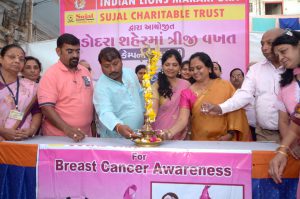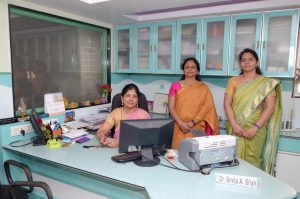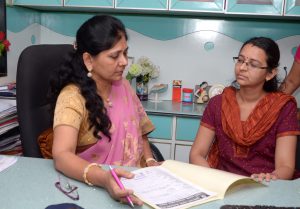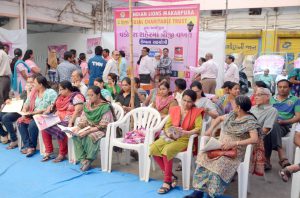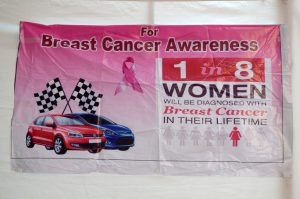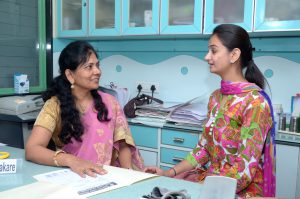News U can Use
RUTVIJ HOSPITAL IS COMMITTED TO TAKE CARE OF PROSPECTIVE MOTHERS
WE HAVE ORGANISED INFERTILITY CAMPS TO CELEBRATE MOTHER’S DAY.
DATE FOR CAMPS ARE 21/05/2023(SUNDAY) AND 28/05/2023 (SUNDAY)
WE WILL OFFER FREE CONSULTATION AND DISCOUNTS ON LAB TESTS & SONOGRAPHY
WE REQUEST THE PATIENTS TO REGISTER ON PHONE NO 9427933560
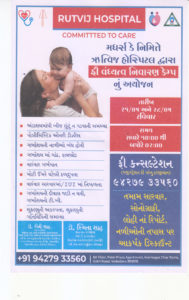



WE AT RUTVIJ HOSPITAL ARE ORGANISING INFERTILITY CAMP ON 25TH DECEMBER 2022 IN COLLOBORATION WITH WING’S WOMEN HOSPITAL AMDAVAD
DO REGISTER FOR YOUR INFERTILITY RELATED ISSUES.
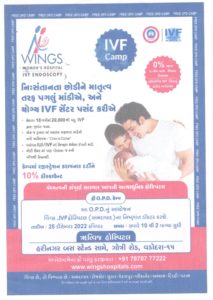
DECEMBER 2020
WELCOME AGAIN
WE ARE HAPPY TO ANNOUNCE THAT RUTVIJ HOSPITAL IS NOW NABH
CERTIFIED.
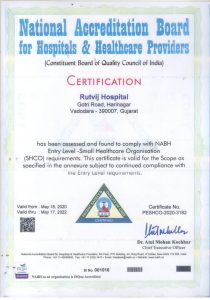
WE APPRECIATE SUPPORT RECEIVED SO FAR FROM YOU WHICH INSPIRE US TO ACHIEVE THIS FEAT
THANKS TO ALL OUR WELL WISHERS.
Welcome to Rutvij Hosptial.
AT RUTVIJ HOSPITAL WE ARE OBSERVING ALL NORMS REQUIRED TO PREVENT SPREAD OF CORONA VIRUS.
1.WE ARE REGULARLY SANITIZING ALL THE AREAS OF HOSPITAL.
2. WE SANITIZE ALL INDIVIDUALS COMING TO THE HOSPITAL.
3. WE ASK EVERY BODY TO OBSERVE HAND HYGIENE.
4. WE ASK EVERYBODY,PATIENT AND RELATIVE TO WEAR MASK CONSTANTLY IN HOSPITAL.
5.WE OBSERVE SOCIAL DISTANCING AS PER RECOMMENDATION.
6. OUR STAFF IS DONNING PERSONAL PROTECTIVE KITS LIKE N 95 MASKS, APRONS,SHOE COVER GLOVES ETC TO PROTECT THEM FROM CORONA VIRUS TO THEMSELVES AND OTHERS.
7. FREQUENT HAND WASH WITH SOAP AND SANITIZATION OF HANDS IS OBSERVED BY STAFF.
8. FREQUENT CLEANING OF FLOORS, DOORS, DOOR HANDLES,TABLE, CHAIR,SOFA ETC IS DONE WITH DISINFECTANT.
9. OT & LABOUR ROOM ARE CLEANED AND FUMIGATED AT REGULAR INTERVALS.
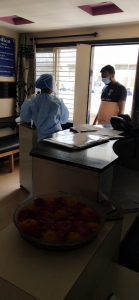
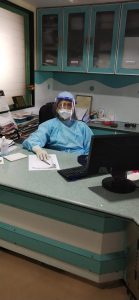
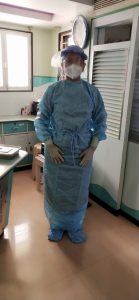
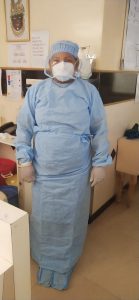
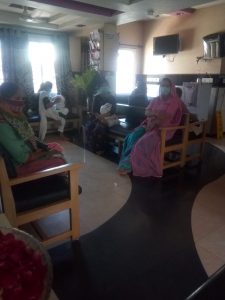
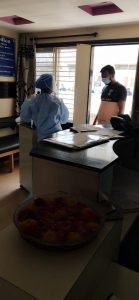
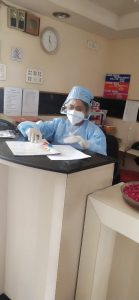
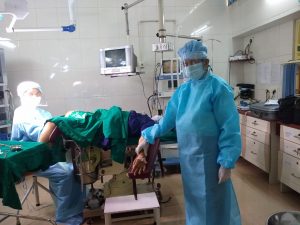
QUESTION & ANSWER SESSION ON COVID 19
What is Novel CoronaVirus.
A Novel coronavirus is a new coronavirus that has not been previously identified. The virus causing coronavirus disease 2019 (COVID-19), is not the same as the coronaviruses that commonly circulate among humans and cause mild illness, like the common cold.
A diagnosis with coronavirus 229E, NL63, OC43, or HKU1 is not the same as a COVID-19 diagnosis. Patients with COVID-19 will be evaluated and cared for differently than patients with common coronavirus diagnosis.
Why is the disease being called Coronavirus disease 2019, COVID-19?
On February 11, 2020 the World Health Organization announced an official name for the disease that is causing the 2019 novel coronavirus outbreak, first identified in Wuhan China. The new name of this disease is coronavirus disease 2019, abbreviated as COVID-19. In COVID-19, ‘CO’ stands for ‘corona,’ ‘VI’ for ‘virus,’ and ‘D’ for disease. Formerly, this disease was referred to as “2019 novel coronavirus” or “2019-nCoV”.
There are many types of human coronaviruses including some that commonly cause mild upper-respiratory tract illnesses. COVID-19 is a new disease, caused be a novel (or new) Coronavirus that has not previously been seen in humans. The name of this disease was selected following the World Health Organization (WHO) best practice external icon for naming of new human infectious diseases.
What is SARS-CoV-2? What is COVID-19?
Severe Acute Respiratory Syndrome Coronavirus-2 (SARS-CoV-2) is the name given to the 2019 novel Coronavirus. COVID-19 is the name given to the disease associated with the virus. SARS-CoV-2 is a new strain of Coronavirus that has not been previously identified in humans.
What is the origin of Corona Virus ?
Coronaviruses are a large family of viruses that are common in people and many different species of animals, including camels, cattle, cats, and bats. Rarely, animal coronaviruses can infect people and then spread between people such as with MERS-CoV, SARS-CoV, and now with this new virus (named SARS-CoV-2).
The SARS-CoV-2 virus is a betacoronavirus, like MERS-CoV and SARS-CoV. All three of these viruses have their origins in bats. Early on, many of the patients at the epicenter of the outbreak in Wuhan, Hubei Province, China had some link to a large seafood and live animal market, suggesting animal-to-person spread. Later, a growing number of patients reportedly did not have exposure to animal markets, indicating person-to-person spread. Person-to-person spread was subsequently reported outside Hubei and in countries outside China. Some international destinations now have apparent community spread with the virus that causes COVID-19. Community spread means some people have been infected and it is not known how or where they became exposed.
Healthcare Professionals: Frequently Asked Questions and Answers
What are the clinical features of COVID-19?
The clinical spectrum of COVID-19 ranges from mild disease with non-specific signs and symptoms of acute respiratory illness, to severe pneumonia with respiratory failure and septic shock. There have also been reports of asymptomatic infection with COVID-19..
Who is at risk for COVID-19?
Currently, those at greatest risk of infection are persons who have had prolonged, unprotected close contact with a patient with symptomatic, confirmed COVID-19 and those who live in or have recently been to areas with sustained transmission.
Who is at risk for severe disease from COVID-19?
The available data are currently insufficient to identify risk factors for severe clinical outcomes. From the limited data that are available for COVID-19 infected patients, and for data from related coronaviruses such as SARS-CoV and MERS-CoV, it is possible that older adults, and persons who have underlying chronic medical conditions, such as immunocompromising conditions, may be at risk for more severe outcomes. See also See also Interim Clinical Guidance for Management of Patients with Confirmed Coronavirus Disease 2019 (COVID-19).
When is someone infectious?
The onset and duration of viral shedding and period of infectiousness for COVID-19 are not yet known. It is possible that SARS-CoV-2 RNA may be detectable in the upper or lower respiratory tract for weeks after illness onset, similar to infection with MERS-CoV and SARS-CoV. However, detection of viral RNA does not necessarily mean that infectious virus is present. Asymptomatic infection with SARS-CoV-2 has been reported, but it is not yet known what role asymptomatic infection plays in transmission. Similarly, the role of pre-symptomatic transmission (infection detection during the incubation period prior to illness onset) is unknown. Existing literature regarding SARS-CoV-2 and other coronaviruses (e.g. MERS-CoV, SARS-CoV) suggest that the incubation period may range from 2–14 days.
Will contact with body fluids spread infection?
Very limited data are available about detection of SARS-CoV-2 and infectious virus in clinical specimens. SARS-CoV-2 RNA has been detected from upper and lower respiratory tract specimens, and SARS-CoV-2 has been isolated from upper respiratory tract specimens and bronchoalveolar lavage fluid. SARS-CoV-2 RNA has been detected in blood and stool specimens, but whether infectious virus is present in extrapulmonary specimens is currently unknown. The duration of SARS-CoV-2 RNA detection in upper and lower respiratory tract specimens and in extrapulmonary specimens is not yet known but may be several weeks or longer, which has been observed in cases of MERS-CoV or SARS-CoV infection. While viable, infectious SARS-CoV has been isolated from respiratory, blood, urine, and stool specimens, in contrast – viable, infectious MERS-CoV has only been isolated from respiratory tract specimens. It is not yet known whether other non-respiratory body fluids from an infected person including vomit, urine, breast milk, or semen can contain viable, infectious SARS-CoV-2.
Can people who recover from COVID-19 be infected again?
The immune response to COVID-19 is not yet understood. Patients with MERS-CoV infection are unlikely to be re-infected shortly after they recover, but it is not yet known whether similar immune protection will be observed for patients with COVID-19.
How should healthcare personnel protect themselves when evaluating a patient who may have COVID-19?
Although the transmission dynamics have yet to be determined, NCDC currently recommends a cautious approach to persons under investigation for COVID-19. Healthcare personnel evaluating PUI or providing care for patients with confirmed COVID-19 should use, Standard Transmission-based Precautions.
Should any diagnostic or therapeutic interventions be withheld due to concerns about transmission of COVID-19?
Patients should receive any interventions they would normally receive as standard of care. Patients with suspected or confirmed COVID-19 should be asked to wear a surgical mask as soon as they are identified and be evaluated in a private room with the door closed. Healthcare personnel entering the room should use Standard and Transmission-based Precautions.
How is COVID-19 treated?
Not all patients with COVID-19 will require medical supportive care. Clinical management for hospitalized patients with COVID-19 is focused on supportive care of complications, including advanced organ support for respiratory failure, septic shock, and multi-organ failure. Empiric testing and treatment for other viral or bacterial etiologies may be warranted.
Corticosteroids are not routinely recommended for viral pneumonia or ARDS and should be avoided unless they are indicated for another reason (e.g., COPD exacerbation, refractory septic shock following Surviving Sepsis Campaign Guidelines).
Should post-exposure prophylaxis be used for people who may have been exposed to COVID-19?
There is currently no post-exposure prophylaxis for people who may have been exposed to COVID-19
Whom should healthcare providers notify if they suspect a patient has COVID-19?
Healthcare providers should consult with local or state health departments to determine whether patients meet criteria for a Persons Under Investigation (PUI). Providers should immediately notify infection control personnel at their facility if they suspect COVID-19 in a patient.
Do patients with confirmed or suspected COVID-19 need to be admitted to the hospital?
Not all patients with COVID-19 require hospital admission. Patients whose clinical presentation warrants in-patient clinical management for supportive medical care should be admitted to the hospital under appropriate isolation precautions. Some patients with an initial mild clinical presentation may worsen in the second week of illness. The decision to monitor these patients in the inpatient or outpatient setting should be made on a case-by-case basis. This decision will depend not only on the clinical presentation, but also on the patient’s ability to engage in monitoring, the ability for safe isolation at home, and the risk of transmission in the patient’s home environment.
When can patients with confirmed COVID-19 be discharged from the hospital?
Patients can be discharged from the healthcare facility whenever clinically indicated. Isolation should be maintained at home if the patient returns home before the time period recommended for discontinuation of hospital Transmission-Based Precautions described below. Decisions to discontinue Transmission-Based Precautions or in-home isolation can be made on a case-by-case basis in consultation with clinicians, infection prevention and control specialists, and public health based upon multiple factors, including disease severity, illness signs and symptoms, and results of laboratory testing for COVID-19 in respiratory specimens.
Is this virus comparable to SARS or to the seasonal flu?
The novel coronavirus detected in China is genetically closely related to the SARS-CoV-1 virus. SARS emerged at the end of 2002 in China, and it caused more than 8 000 cases in 33 countries over a period of eight months. Around one in ten of the people who developed SARS died.
The current COVID-19 outbreak caused around 7 000 reported cases in China during the first month after initial reports (January 2020), with a further 80 000 cases reported globally during the second month (February 2020). Of these first 87 000 cases, about 3 000 died. Cases are now being detected in Europe and across the globe. See the latest situations updates for the latest available information.
While the viruses that cause both COVID-19 and seasonal influenza are transmitted from person-to-person and may cause similar symptoms, the two viruses are very different and do not behave in the same way. ECDC estimates that between 15 000 and 75 000 people die prematurely due to causes associated with seasonal influenza each year in the EU, the UK, Norway, Iceland and Liechtenstein. This is approximately 1 in every 1 000 people who are infected. By comparison, the current estimated mortality rate for COVID-19 is 20-30 per 1 000 people.
Despite the relatively low mortality rate for seasonal influenza, many people die from the disease due to the large number of people who contract it each year. The concern about COVID-19 is that, unlike influenza, there is no vaccine and no specific treatment for the disease. It also appears to be as transmissible as influenza if not more so. As it is a new virus, nobody has prior immunity which in theory means that the entire human population is potentially susceptible to COVID-19 infection4. How severe is COVID-19 infection?
Preliminary findings indicate that the mortality rate for COVID-19 is 20-30 per thousand people diagnosed. This is significantly less than the 2003 SARS outbreak. However, it is much higher than the mortality rate for seasonal influenza.
5. What is the mode of transmission? How (easily) does it spread?
While animals are the original source of the virus, it is now spreading from person to person (human-to-human transmission). There is not enough epidemiological information at this time to determine how easily and sustainably this virus spreads between people, but it is currently estimated that, on average, one infected person will infect between two and three more. The virus seems to be transmitted mainly via respiratory droplets that people sneeze, cough, or exhale. The virus can also survive for several hours on surfaces such as tables and door handles.
The incubation period for COVID-19 (i.e. the time between exposure to the virus and onset of symptoms) is currently estimated at between two and 14 days. At this stage, we know that the virus can be transmitted when people who are infected show flu-like symptoms. It is currently believed that people who are infected but who do not show symptoms cannot transmit the virus.
Medical information
1. What are the symptoms of COVID-19 infection
The virus can cause mild, flu-like symptoms such as:
- fever
- cough
- difficulty breathing
- muscle pain
- tiredness
More serious cases develop severe pneumonia, acute respiratory distress syndrome, sepsis and septic shock that can lead to death.
2. Are some people more at risk than others?
Generally elderly people and those with underlying health conditions (e.g. hypertension, diabetes, cardiovascular disease, chronic respiratory disease and cancer) are considered to be more at risk of developing severe symptoms.
3. Are children also at risk of infection?
Disease in children appears to be relatively rare and mild. A large study from China suggested that just over 2% of cases were under 18 years of age. Of these, fewer than 3% developed severe or critical disease.
4. What about pregnant women?
There is no published evidence yet on the severity of illness among pregnant women after COVID-19 infection. It is suggested that all pregnant women follow the same precautions for the prevention of COVID-19, including regular handwashing, avoiding individuals who are sick, and self-isolating in case of any symptoms, while consulting a healthcare provider by telephone for advice.
5. Is there a treatment for the COVID-19 disease?
There is no specific treatment for this disease, so healthcare providers treat the clinical symptoms (e.g. fever, difficulty breathing) of patients. Supportive care (e.g. fluid management, oxygen therapy, etc.) can be highly effective for patients with symptoms.
6. When should I be tested for COVID-19?
Current advice for testing depends on the stage of the outbreak in the country or area where you live. Countries might be at different stages of the epidemic, and the approach to testing may differ according to country policy. This is adapted to the situation at local and national level.
If you live in a country or area where there has been no or very limited transmission, ECDC advice is that you should be tested if you have:
- Acute respiratory tract infection (sudden onset of at least one of the following: cough, fever, shortness of breath) AND with no other no other cause that fully explains your illness AND with a history of travel or residence in a country/area reporting local or community transmission* during the 14 days prior to symptom onset; OR
- Any acute respiratory illness AND having been in close contact with a confirmed or probable COVID-19 case in the last 14 days prior to onset of symptoms; OR
- Severe acute respiratory infection (fever and at least one sign/symptom of respiratory disease (e.g., cough, fever, shortness breath)) AND requiring hospitalisation AND doctors can find no other cause that fully explains your illness.
* Community transmission is said to be taking place if it is not known where a large proportion of those who have confirmed infection contracted the virus (e.g. they have not knowingly been in contact with another confirmed case, or travelled to an affected area).
If you live in a country or area where community transmission is known to be ongoing, all patients presenting with symptoms of acute respiratory infection in primary care or at their first contact with the healthcare system will be considered as suspected cases and should be tested.
More information is available in the Case definition and
7. Where can I get tested?
If your healthcare provider believes there is a need for a laboratory test for the virus that causes COVID-19, he/she will inform you of the procedure to follow and advise where and how the test can be performed.
Prevention
1. How can I avoid getting infected?
The virus enters your body via your eyes, nose and/or mouth, so it is important to avoid touching your face with unwashed hands.
Washing of hands with soap and water for at least 20 seconds, or cleaning hands with alcohol-based solutions, gels or tissues is recommended in all settings.
It is important to note that people who are infected but who do not (yet) have symptoms are not believed to be infectious.
2. What should I do if I have had close contact with someone who has COVID-19?
Notify public health authorities in your area who will provide guidance on further steps to take. If you develop any symptoms, you should immediately call your healthcare provider for advice, mentioning that you have been in contact with someone with COVID-19.
3. Are face masks effective in protecting against COVID-19?
If you are infected, the use of surgical face masks may reduce the risk of your infecting other people, but there is no evidence that face masks will effectively prevent you from being infected with the virus. In fact, it is possible that the use of face masks may even increase the risk of infection due to a false sense of security and increased contact between hands, mouth and eyes.
4. Is there a vaccine against the virus? How long will it take to develop a vaccine?
There are currently no vaccines against human coronaviruses, including the virus that causes COVID-19. This is why it is very important to prevent infection and to contain further spread of the virus.
The development of vaccines takes time. Several pharmaceutical companies are working on vaccine candidates. It will, however, take months or years before any vaccine can be widely used, as it needs to undergo extensive testing to determine its safety and efficacy.
5. Am I protected against COVID-19 if I had the influenza vaccine this year?
Influenza and the virus that causes COVID-19 are two very different viruses and the seasonal influenza vaccine will not protect against COVID-19.
What is the current situation in the India regarding COVID-19?
1. How prepared is India for COVID-19 and what is the Government doing?
………
2. Am I at risk of contracting COVID-19 infection in India?
This outbreak is evolving rapidly and the risk assessment is changing accordingly. ECDC is continuously assessing the risk for EU citizens and you can find the latest information in the daily updated ECDC risk assessment.
Daily risk assessment on COVID-19, 9 March 2020 India
3. How many people have been infected in India
From the beginning of the outbreak up until March 6, 2020, more than 5 500 cases and 159 deaths from 27 countries had been reported in the EU/EEA and the UK. See the ECDC daily situation update for the latest available information. Given the extensive movement of people and the fact that the virus is transmitted from person to person, further cases are expected in Europe.
Situation update for India as on …… March 2020 08:00
4. How long will this outbreak last?
Unfortunately, it is not possible to predict how long the outbreak will last and how the epidemic will unfold. We are dealing with a new virus and therefore a lot of uncertainty remains. For instance, it is not known whether transmission within the EU/EEA will naturally decrease during the northern hemisphere summer, as is observed for seasonal influenza.
5. Should schools and day centres be closed?
The evidence we have to date indicates that COVID-19 does not affect children nearly as much as it affects adults. However, the extent to which children play a role in the transmission of the virus is still unknown. Due to this uncertainty, it is especially important to encourage children to wash their hands carefully to reduce any possible risk of them becoming infected themselves, and then of passing on the virus. If children do become ill, they should be strictly isolated at home.
……………..
Depending on local circumstances, local authorities may decide to temporarily close schools and daycare centres to reduce transmission. Wherever this happens, it is important that parents and caregivers are supported, for example by their employers, to stay at home so they can take care of their children.
Information for travelers
1. What precautions should I take if I am visiting an area of local or community transmission?
Travellers visiting areas of local or community COVID-19 transmission should adhere to strict hygiene measures, wash hands with soap and water regularly, and/or use alcohol-based hand sanitisers. Touching the face with unwashed hands should be avoided. Travellers should avoid contact with sick persons, in particular those with respiratory symptoms and fever. It should be emphasised that older people and those with underlying health conditions should take these precautionary measures very seriously.
2. What if I have recently been in an area of local or community transmission?
Travellers returning from areas of local or community transmission should monitor their health for 14 days.. People with symptoms should contact their healthcare specialist via telephone first, and indicate their exposure and travel history before seeking medical attention in person. Symptomatic people should avoid contact with others until they have seen a healthcare specialist.
Read more
WHO: Coronavirus disease (COVID-2019) situation reports
3. What is the risk of infection when travelling by plane?
If it is established that a COVID-19 case has been on an airplane, other passengers who were at risk (as defined by how near they were seated to the infected passenger) will be contacted by public health authorities. Should you have questions about a flight you have taken, please contact your local health authority for advice. The risk of being infected on an airplane cannot be excluded, but is currently considered to be low for an individual traveler. The risk of being infected in an airport is similar to that of any other place where many people gather.
4. Why are people not being checked for COVID-19 at the airport when arriving from areas of local or community transmission?
There is evidence that checking people at the airport (known as entry screening) is not very effective in preventing the spread of the virus, especially when people do not have symptoms. It is generally considered more useful to provide those arriving at airports with clear information explaining what to do if they develop symptoms after arrival.
5. Where can I learn more?
……….
Read more
WHO: Coronavirus disease (COVID-2019) situation reports
COVID-19 and animals and food products
1. What is the risk of COVID-19 infection from animals or animal products imported from affected areas?
There is no evidence that any of the animals or animal products authorised for entry into India pose a risk to the health of Indian citizens as a result of the presence of COVID-19.
2. What is the risk of COVID-19 infection from food products imported from affected areas?
There has been no report of transmission of COVID-19 via food and therefore there is no evidence that food items imported into India in accordance with the applicable animal and public health regulations pose a risk for the health of indian citizens in relation to COVID-19. The main mode of transmission is from person to person.
3. What is the risk of COVID-19 infection from contact with pets and other animals in the EU?
Current research links COVID-19 to certain types of bat as the original source, but does not exclude the involvement of other animals. Several types of coronaviruses can infect animals and can be transmitted to other animals and people. There is no evidence that companion animals (e.g. dogs or cats) pose a risk of infection to humans. As a general precaution, it is always wise to observe basic principles of hygiene when in contact with animals.
Ante Natal Class are held every month.
Pregnant patients are councelled about care of mother during pregnant phase, delivery period and baby care.
11/3/2015 WAS WOMEN’S DAY
IT WAS CELEBRATED AT RUTVIJ HOSPITAL BUT WITH LITTLE DIFFERENCE!
WE ORGANISED AT OUR HOSPITAL BREAST CANCER DETECTION CAMP FOR WOMEN ON THAT DAY. IT WAS DONE IN ASSOCIATION WITH INDIAN LIONS MAKARPURA AND SUJAL CHARITABLE TRUST. IT WAS A HUGE SUCCESS.WOMEN PARTICIPATED IN LARGE NUMBERS. EXAMINATION WAS DONE FREE OF COST AND APPROPRIATE INVESTIGATIONS LIKE MAMMOGRAPHY WAS ARRANGED EITHER FREE OR AT SUBSIDIZED RATE FOR NEEDY WOMEN.

